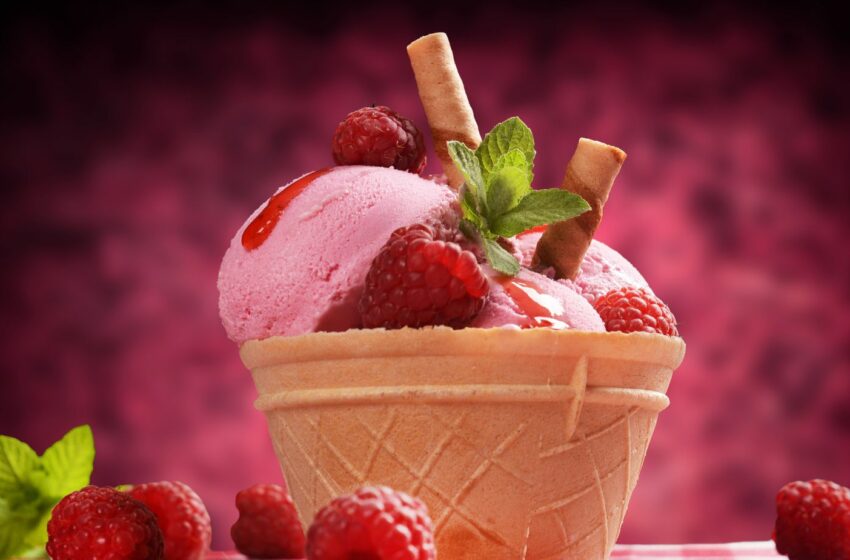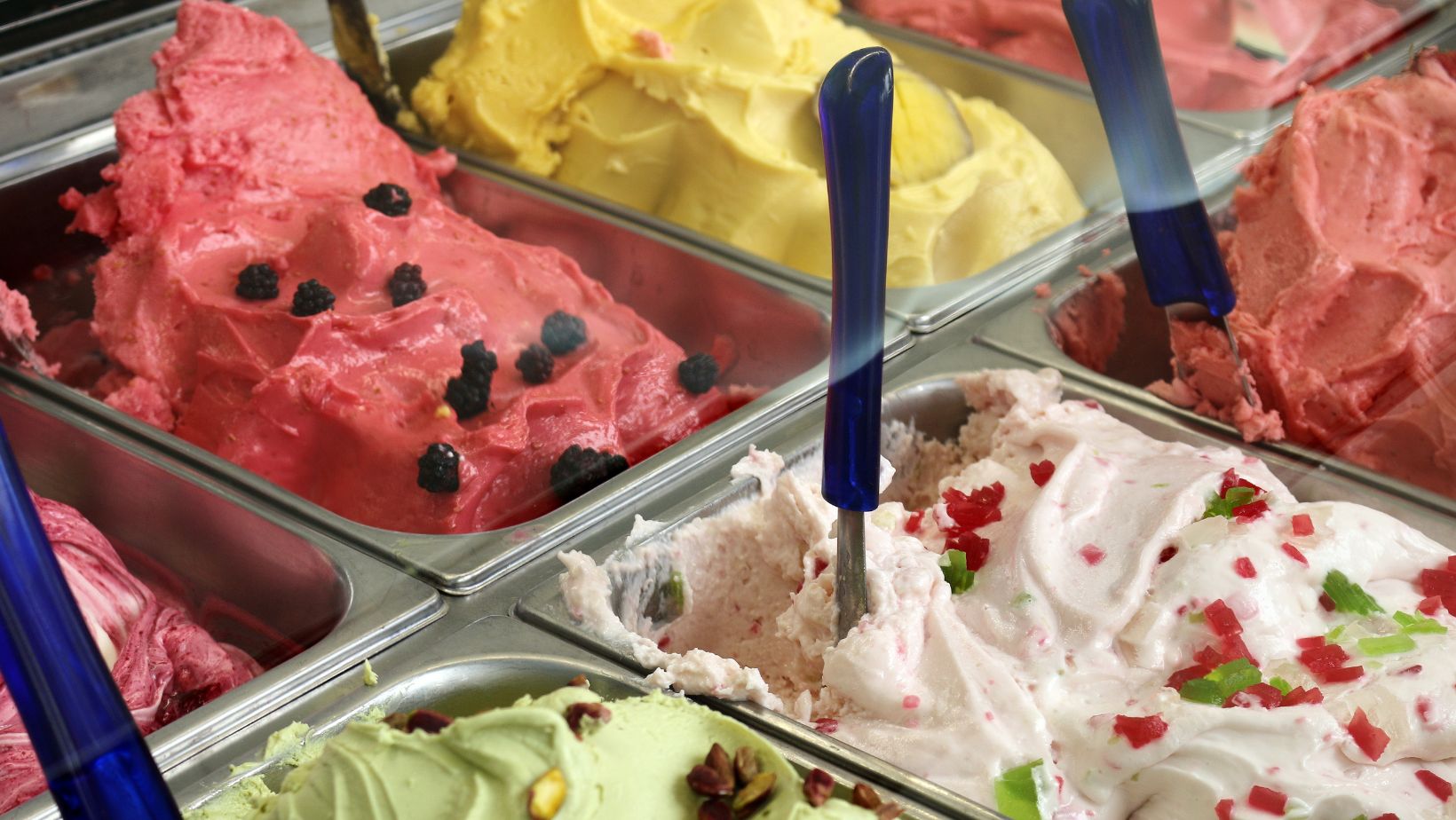
The History Of Ice Cream
Will Ice Cream Taste Good If It Is Formed Into Balls And Frozen
Ice cream has a long and intriguing history where people have been creating variations of the frozen treat for centuries. It is believed that the origins of ice cream can be traced back to ancient China and Persia, where they created desserts made from ice and fruits. In Europe, during the 13th century, Marco Polo brought recipes for ice cream from his travels to China. However, it was not until the 16th century that Italy began to produce what we know today as ice cream. They added milk or cream which resulted in a smoother texture and an even more delicious taste.
The popularity of ice cream continued to grow, and in the 18th century, people found ways to mass-produce it using ice houses and salt. The first ice cream parlor opened in New York City in 1776, and by the turn of the 20th century, many others had followed suit.
As for whether or not ice cream tastes good in ball form when frozen, it all depends on personal preference. Ice cream can be molded into balls easily using scoops or other tools, but some people prefer their ice cream softer while others enjoy it harder. The freezing process can also affect the texture and flavor of ice cream balls.
If only they knew the true potential of frozen balls of cream, the Europeans would have skipped the Crusades and gone straight for the frozen treat trade.
Ice Cream: Its Introduction to Europe
The arrival of the frozen treat in Europe has a curious history. While its origins remain shrouded in mystery, it is believed that Marco Polo was responsible for bringing the recipe to Italy during his travels in the thirteenth century. It was then refined and popularized by Catherine de’ Medici, who introduced it at her lavish feasts. The dish quickly spread among European royalty, eventually becoming more accessible to the common people with the establishment of ice cream parlors.
Interestingly, despite its Italian origins, ice cream as we know it today is actually an American creation. A number of Americans patented various machines for making ice cream, and by 1851, there were more than 50 ice cream manufacturers in New York City alone. The first public sale of ice cream in America reportedly took place in Baltimore on May 25th, 1744.
While an age-old favorite now enjoyed worldwide, the humble beginnings of this tasty treat are steeped in obscurity- but without a doubt its introduction to Europe marked a turning point in culinary history.
If eating ice cream out of a tub is too vanilla for you, try the modern innovation of ice cream rolled in edible gold or infused with exotic fruits – because why settle for basic when you can have bougie?
Modern Ice Cream Innovations
To explore modern ice cream innovations with a focus on ice cream balls and freezing techniques, check out this section from “The History of Ice Cream”. Discover the popularity of ice cream balls and learn about how different freezing techniques impact the taste of the frozen dessert.
Ice Cream Balls and Its Popularity
Ice cream balls are a popular new trend in the ice cream world, providing a unique experience to consumers. A variety of flavors and toppings make ice cream balls a fun and customizable option for any occasion.
|
Ice Cream Balls |
Popularity |
|
Flavors |
High |
|
Toppings |
High |
|
Customizability |
High |
|
Availability |
Limited |
Unique details include the fact that ice cream balls can be served on cones or even sticks, making them perfect for on-the-go treats. They are also great for parties and events, with mini ice cream ball options available as well.
Pro Tip: Try experimenting with different flavor combinations and toppings to create your own unique ice cream ball creation.
Who knew that the key to great ice cream was giving it the cold shoulder?

Freezing Techniques and Its Effects on Taste
Utilizing distinct cooling approaches can significantly impact the flavor and texture of ice cream.
|
Cooling Appraoch |
Effects on Taste |
|
Blast Freezing |
Shortens freezing duration, thereby minimizing ice crystal development and enhancing smoothness. |
|
Batch Freezing |
Slow, extended freezing process causes more significant crystal development, leading to a denser texture. |
|
Nitrogen-based Freezing |
Quickly freezes mixture, aiding in reducing ice crystal size while resulting in a light and airy texture. |
It’s crucial to note that utilizing liquid nitrogen to freeze the mix before adding it to a traditional churn method can minimize melting issues while increasing efficiency.
Alternative freezing approaches have been experimented with recently. Regardless of the method used, rapid freezing provides constant quality in home production.
Before its modernization beginning in the mid-19th century, there were no means for mass-producing or keeping ice cream cold outside of winter. Consequently, frozen desserts were often reserved for those who could obtain it naturally by harvesting ice from mountain lakes and rivers during winter months or buying expensive imported blocks from countries such as Norway.
Back in the day, they didn’t need fancy ice cream makers and exotic ingredients, just a bucket and some elbow grease – now excuse me while I go complain about having to wait for my modern ice cream to churn.
Ice Cream Recipes From The Past
Ice cream has a rich history dating back centuries, and the diverse array of ice cream recipes from bygone eras is fascinating. From sorbets and sherbets to frozen custards and gelatos, each recipe offers a unique taste of the past.
A table highlighting the various ice cream recipes from the past includes columns such as ingredients, preparation method, serving suggestions, and origin. Some remarkable recipes include ‘Peach Melba’, ‘Bombe Surprise’, and ‘Spumoni Ice Cream’.
In addition to exciting recipes, some interesting details mentioned are that ancient Greek emperors enjoyed iced drinks flavored with fruit juices and honey while medieval chefs used snow combined with cream, honey, and spices to make early versions of ice cream.
It is thought that Marco Polo introduced a form of dessert similar to ice cream into Europe after discovering a recipe in China. The love for this delicious treat spread quickly across Europe leading to its evolution through experimentation with several flavors.
Through time, quality improved thanks to improvements in technology invention: modern refrigeration after the commercial advent of electricity. Modern innovations led to popular products like frozen yogurt or low-fat versions that are also available today.
From Italy’s gelato to Thailand’s sticky rice and mango flavor, ice cream around the world proves that happiness truly knows no borders.

Ice Cream Around The World
Ice cream has become a universal delight that is enjoyed by people of all ages around the globe. From East to West and North to South, each country has its own variation and interpretation of this creamy dessert. Its history dates back to ancient China, where hundreds of years ago, the Chinese mixed snow with milk and rice for flavor. Today, Ice Cream around the world reflects different customs, flavors, and traditions.
- Italy’s Gelato is dense with less air whipped into it for intense flavors.
- Thailand’s traditional street food version is lighter using coconut milk.
- In India, Kulfi is made from evaporated milk flavored with spices or nuts.
- America boasts of waffle cones and sundae toppings that offer creative combinations.
- Mexico’s helado de paila uses a metal drum surrounded by ice and rock salt for a smoother texture
- Japan’s mochi ice cream bundling ice cream inside sweet rice dough wrapped in seaweed
There are many more variations such as Thai rolled ice cream, French sorbet & parfait, Persian bastani & faloodeh cold dessert, Turkish dondurma which doesn’t melt under high temperatures due to ingredients like salep powder. Regardless, each part of the world adds their unique touch to the beloved frozen dessert.
Believe it or not but In 1920s US Prohibition outlawed alcohol production leading Candymakers to switch to making candy bars. Furthermore, it also created an opportunity for American Ice Cream makers who started adding ingredients such as candy bars and other sweets Despite being illegal liquor businesses could still make small batches so they created “Nelson’s Special” soon known as rum raisin after alcohol consumption was allowed again post-prohibition
Ice cream science: where dairy meets alchemy, and we’re all just happy to be taste-testers.
The Science Behind Ice Cream’s Taste
Exploring the Secrets of Ice Cream’s Flavor
The taste of ice cream is a complex combination of various factors. Its flavor is influenced by ingredients, texture, temperature, and storage conditions. Each element plays a pivotal role in determining the final product’s taste.
|
Ingredients |
Texture |
Temperature |
Storage Conditions |
|
Milk |
Smooth |
Cool |
Airtight Container |
|
Sugar |
Creamy |
Cold |
Below Freezing Point |
|
Flavorings |
Fluffy |
Served Fresh |
Away From Strong Odors |
|
Emulsifiers |
A fascinating detail about ice cream is that its unique texture influences perception of sweetness, with softer textures being perceived as sweeter than firmer ones due to increased contact with taste buds.
Innovative recipe combinations and experimentation are key to discovering new and exciting flavor profiles in ice cream. Actions like adding salt or alcohol to your mix can vastly elevate its taste. Additionally, freezing smaller portions can result in a creamier texture and consistent flavors throughout the whole batch.
Freezing and shaping may change the flavor of ice cream, but at the end of the day, nothing tastes sweeter than a scooped cone on a hot summer day.
How Shaping And Freezing Affect Ice Cream’s Flavor
The way ice cream is shaped and frozen can have a significant impact on its taste. A study found that the shape of ice cream affects the melting rate, which in turn affects the perception of flavor. Additionally, when ice cream is frozen into balls, it can become denser and more difficult to scoop, ultimately altering its texture.
The following table shows the impact of ice cream’s shape on the melting rate and flavor perception:
|
Shape |
Melting Rate |
Flavor Perception |
|
Scoops |
Slow |
Strong |
|
Balls |
Fast |
Weak |
Interestingly, the speed at which ice cream melts has been found to be affected by various factors such as temperature, humidity levels, and even color. Moreover, research has discovered that the temperature at which ice cream is served also plays a significant role in its taste.
A famous story about ice cream involves America’s first president George Washington. Legend has it that he spent $200 on ice cream during one summer which was a considerable sum at that time. This shows how far back our love for this delicious treat goes!
Pros: Eating frozen balls of ice cream can be a great stress reliever. Cons: Brain freeze may also induce further stress.

Pros And Cons of Ice Cream Formed into Balls And Frozen
Ice cream can be formed into balls and frozen, but is it a good idea? Here are several things to consider before trying this method.
- Pros:
- -Formed balls are easy to portion
- -Frozen balls melt slower than scoops
- -Uniform ball shape creates aesthetically pleasing appearance
- Cons:
- -Formed balls may alter the texture of the ice cream
- -Requires more effort and tools than traditional scooping
In addition, it’s important to note that flavor distribution may be uneven when using this method. Overall, it comes down to personal preference and experimentation.
Pro Tip: Make sure the ice cream is cold enough to hold its shape before attempting to form it into balls.
